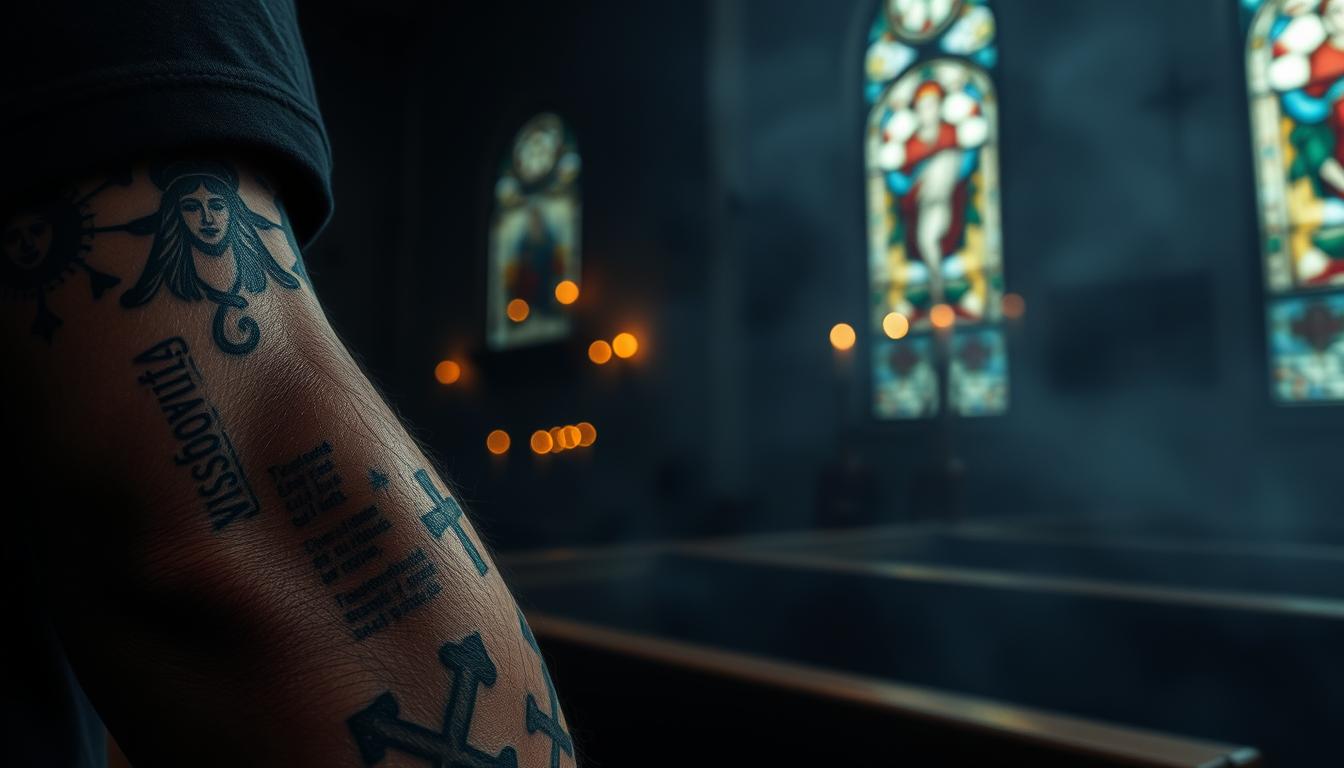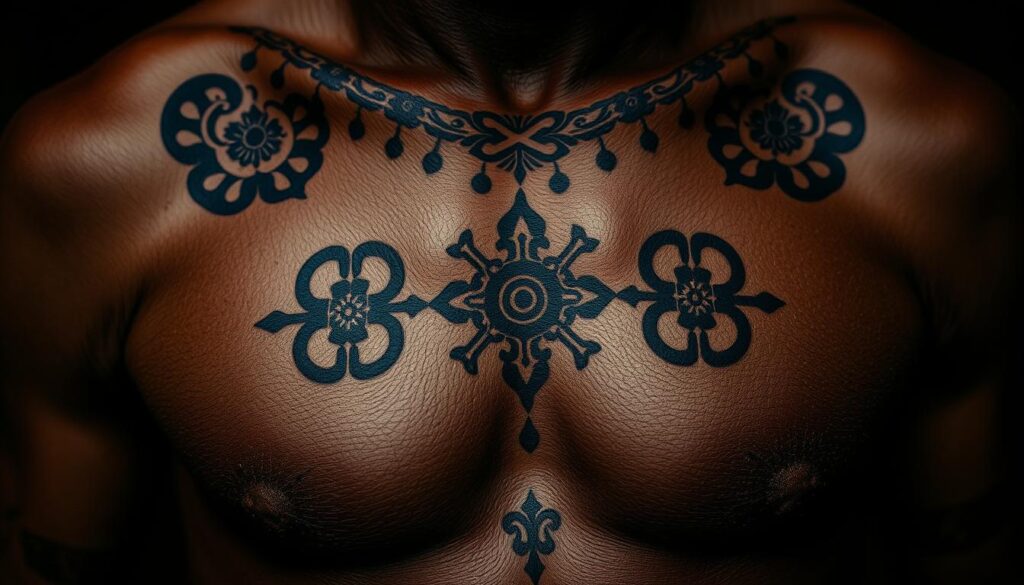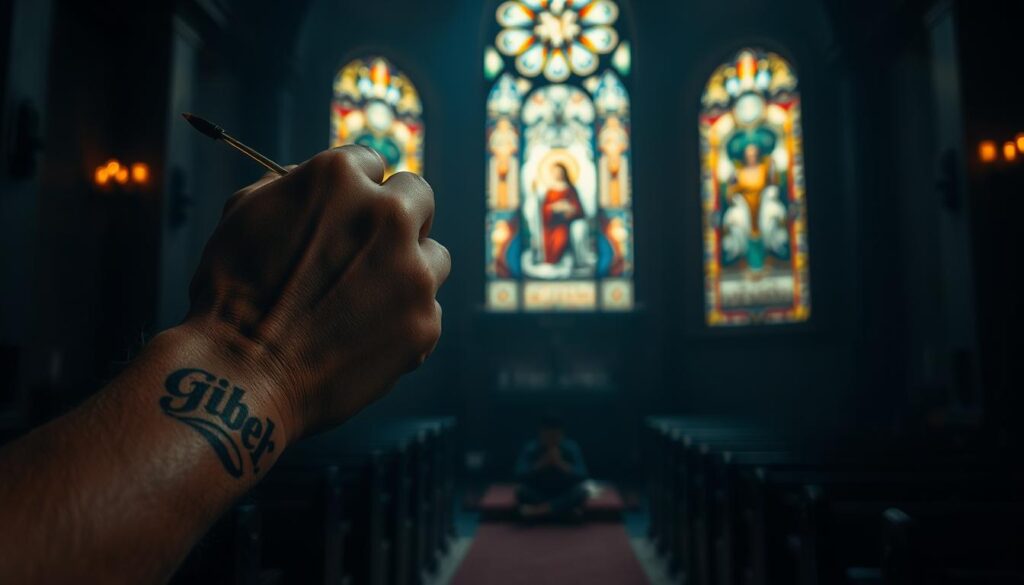
What if a choice millions make today isn’t actually condemned in Scripture? For decades, body art carried whispers of rebellion—but now, it’s everywhere. Teachers, nurses, and even pastors proudly display meaningful designs. Yet lingering doubts persist: does faith clash with this modern form of self-expression?
Cultural shifts have transformed how society views ink. Once linked to counterculture movements, it’s now a mainstream celebration of identity and memory. Over 30% of Americans under 40 sport at least one design, according to recent surveys. Yet despite its growing acceptance, questions about biblical alignment linger.
The Old Testament mentions markings in Leviticus 19:28, but context matters. Ancient practices often tied body art to pagan rituals—far removed from today’s artistic or memorial purposes. Critically, the New Testament never addresses the topic. This silence creates space for prayerful discernment rather than rigid rules.
Your convictions matter here. While some believers avoid ink to honor tradition, others see it as a canvas for faith-based stories. What’s clear? Scripture prioritizes the heart’s posture over external appearances. As you navigate this gray area, wisdom and grace become your guides.
Key Takeaways
- The New Testament doesn’t explicitly address modern body art, leaving room for personal discernment.
- Cultural associations with rebellion have shifted as tattoos become mainstream.
- Old Testament references to markings were tied to specific pagan rituals, not current practices.
- Faithful decision-making involves prayer, biblical principles, and respect for others’ views.
- Your choice should align with your conscience and understanding of God’s character.
Historical and Biblical Context

Ancient cultures marked their skin for purposes that might surprise modern readers. Long before ink became a form of self-expression, these practices carried spiritual, social, and medical significance. Let’s explore how body art functioned in biblical times compared to today’s motivations.
Origins in the Old Testament Era
The Old Testament references markings in Leviticus 19:28, but context is key. Scholars note the Hebrew term kethobeth might describe temporary paint used in pagan rituals rather than permanent designs. Ancient peoples often cut their skin to honor false gods or identify criminals—practices God warned Israel to avoid.
Shifting Cultural Meanings
Consider Ötzi the Iceman, whose 5,300-year-old remains reveal 61 markings. Researchers believe these served medical or spiritual purposes—far from today’s artistic choices. While past societies linked body art to superstition or shame, modern designs often celebrate personal milestones or faith.
You’ll notice a crucial difference: ancient marks typically reflected group identity or coercion, while contemporary ink usually expresses individual stories. This shift challenges us to avoid oversimplifying Scripture’s guidance across time and cultures.
Exploring the Debate: Are Tattoos a Sin?

Let’s cut through the noise. When considering permanent markings, many believers wrestle with two questions: What does Scripture truly say? And how do ancient texts apply today? The answers require diving deeper than surface-level assumptions.
Scriptural Silence and New Testament Insights
Notice this striking fact: Jesus never addressed body art. The apostles didn’t debate it either. This absence creates space for wisdom rather than rigid rules. As Paul writes in Romans 14:5, “Each one should be fully convinced in their own mind.”
New Testament teachings focus on heart posture over external practices. While the old testament law included specific prohibitions, Christ fulfilled ceremonial requirements. You’re called to love God and others—not follow every ancient cultural boundary.
Examining Leviticus 19:28 and Its Meaning
That single verse about markings (Leviticus 19:28) appears in a list of commands separating Israel from neighboring tribes. Pagans used cuts and ink to mourn idols—a practice God forbade to protect spiritual purity.
Here’s the kicker: the same chapter bans mixing fabrics and trimming beards. If you enforce one law, consistency demands keeping others. Most believers don’t—showing these rules served specific historical purposes rather than universal principles.
Your choice ultimately reflects how you honor God with your body. As 1 Corinthians 6:20 reminds, “You were bought with a price.” Whether marked or unmarked, let that truth guide your decision.
Personal Reflection and Christian Freedom

How does your faith journey intersect with personal choices like body art? Christian freedom allows room for prayerful consideration, not knee-jerk reactions. Your convictions here matter deeply—but so does discernment.
Guiding Principles for Your Decision
Honor starts at home. If you’re under 18, Ephesians 6:1-2 makes it clear: parental authority trumps personal desire. Choosing to get tattoo against their wishes contradicts biblical obedience.
Your body isn’t just yours—it’s God’s dwelling place (1 Corinthians 6:19-20). Permanent designs should reflect reverence, not rebellion. Ask: “Does this decision draw me closer to Christ or distract from His work in me?”
Balancing Individual Convictions with Biblical Teachings
Some believers view skin as sacred canvas; others see modesty as best. Romans 14:23 offers clarity: “Whatever isn’t from faith is sin.” If doubts linger, pause.
Practical wisdom matters too. Can you afford it? Will the design honor God in 20 years? How might it affect your witness? Grace-filled discussions with mature friends or church leaders often reveal fresh perspectives.
Remember: your choice becomes part of your spiritual story. Let love for God and others—not trends or pressure—guide your path.
Conclusion
Your journey through Scripture reveals more about God’s heart than ink on skin. Christian freedom invites thoughtful choices, not blanket rules. While ancient laws addressed specific cultural dangers, modern motives often center on faith stories or personal meaning.
Seek wisdom through prayer. Let love guide your decisions—for God, others, and your own spiritual growth. The Bible’s silence on this question becomes an invitation to deepen trust in Christ’s sufficiency.
Respect those who disagree. Mature believers worldwide reach different conclusions about bodies as temples. What unites you matters more: shared devotion to Christ’s mission in a changing world.
Move forward with confidence. Whether marked or unmarked, your identity rests in grace. Let this passage through uncertainty strengthen your reliance on divine guidance for life’s gray areas.
